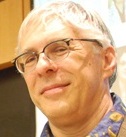1.2: Models, Hypotheses, and Theories
- Page ID
- 3901
Tentative scientific models are commonly known as hypotheses. Such models are valuable in that they serve as a way to clearly articulate one’s assumptions and their implications. They form the logical basis for generating testable predictions about the phenomena they purport to explain. As scientific models become more sophisticated, their predictions can be expected to become more and more accurate or apply to areas that previous forms of the model could not handle. Let us assume that two models are equally good at explaining a particular observation. How might we judge between them? One way is the rule of thumb known as Occam's Razor, also known as the Principle of Parsimony, named after the medieval philosopher William of Occam (1287–1347). This rule states that all other things being equal, the simplest explanation is to be preferred. This is not to imply that an accurate scientific explanation will be simple, or that the simplest explanations are the correct ones, only that to be useful, a scientific model should not be more complex than necessary. Consider two models for a particular phenomenon, one that involves angels and the other that does not. We need not seriously consider the model that invokes angels unless we can accurately monitor the presence of angels and if so, whether they are actively involved in the process to be explained. Why? Because angels, if they exist, imply more complex factors that does a simple natural explanation. For example, we would have to explain what angels are made of, how they originated, and how they intervene in, or interact with the physical world, that is, how they make matter do things. Do they obey the laws of thermodynamics or not? Under what conditions do they intervene? Are their interventions consistent or capricious? Assuming that an alternative, angel-less model is as or more accurate at describing the phenomena, the scientific choice would be the angel-less model. Parsimony (an extreme unwillingness to spend money or use resources) has the practical effect that it lets us restrict our thinking to the minimal model that is needed to explain specific phenomena. The surprising result, well illustrated by a talk by Murray Gell-Mann, is that simple, albeit often counter-intuitive rules can explain much of the Universe with remarkable precision.17 A model that fails to accurately describe and predict the observable world must be missing something and is either partially or completely wrong.
Scientific models are continually being modified, expanded, or replaced in order to explain more and more phenomena more and more accurately. It is an implicit assumption of science that the Universe can be understood in scientific terms, and this presumption has been repeatedly confirmed but has by no means been proven.
A model that has been repeatedly confirmed and covers many different observations is known as a theory – at least this is the meaning of the word in a rigorous scientific context. It is worth noting that the word theory is often misused, even by scientists who might be expected to know better. If there are multiple “theories” to explain a particular phenomenon, it is more correct to say that i) these are not actually theories, in the scientific sense, but rather working models or simple speculations, and that ii) one or more, and perhaps all of these models are incorrect or incomplete. A scientific theory is a very special set of ideas that explains, in a logically consistent, empirically supported, and predictive manner a broad range of phenomena. Moreover, it has been tested repeatedly by a number of critical and objective people and measures – that is people who have no vested interest in the outcome – and found to provide accurate descriptions of the phenomenon it purports to explain. It is not idle speculation. If you are curious, you might count how many times the word theory is misused, at least in the scientific sense, in your various classes.
"Gravity explains the motions of the planets, but it cannot explain who sets the planets in motion." - Isaac Newton
That said, theories are not static. New or more accurate observations that a theory cannot explain will inevitably drive the theory's revision or replacement. When this occurs, the new theory explains the new observations as well as everything explained by the older theory. Consider for example, gravity. Isaac Newton’s law of gravity, describes how objects behave and it is possible to make extremely accurate predictions of how objects behave using its rules. However, Newton did not really have a theory of gravity, that is, a naturalistic explanation for why gravity exists and why it behaves the way it does. He relied, in fact, on a supernatural explanation.18 When it was shown that Newton’s law of gravity failed in specific situations, such as when an object is in close proximity of a massive object, like the sun, new rules and explanations were needed. Albert Einstein’s Theory of General Relativity not only more accurately predicts the behavior of these systems, but also provided a naturalistic explanation for the origin of the gravitational force.19 So is general relativity true? Not necessarily, which is why scientists continue to test its predictions in increasingly extreme situations.
References
17 Beauty, truth and ... physics?
18 Want to read an interesting biography of Newton, check out “Isaac Newton” by James Gleick
Contributors and Attributions
Michael W. Klymkowsky (University of Colorado Boulder) and Melanie M. Cooper (Michigan State University) with significant contributions by Emina Begovic & some editorial assistance of Rebecca Klymkowsky.


